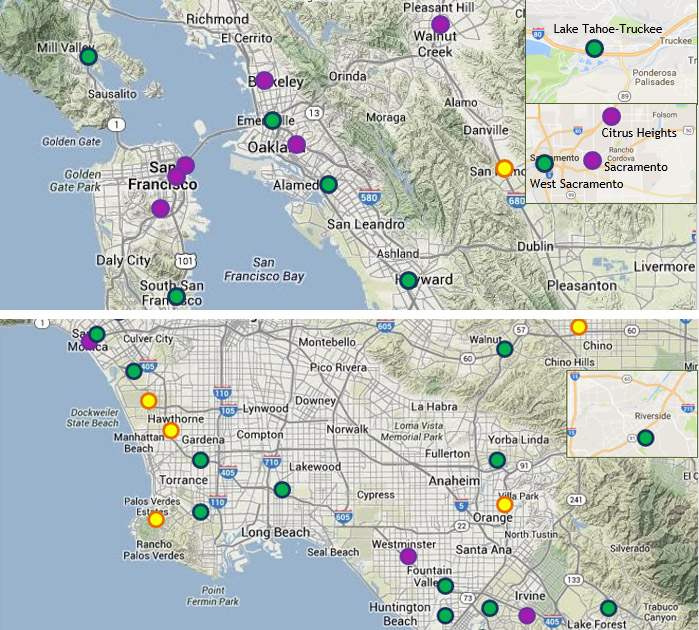The Energy Commission released a Notice of Proposed Awards for 16 additional hydrogen stations to continue expanding the hydrogen station network in California. Added to the retail hydrogen stations already open and under construction, California will have more than 60 stations statewide by 2020 (or sooner.)
The Energy Commission provides co-funding for hydrogen stations as part of the Alternative and Renewable Fuel and Vehicle Technologies Program (ARFVTP) that provides funding for all alternative fuels and vehicles. This program, authorized by Assembly Bill 8, will provide up to $20 million a year through 2023 to fund a minimum of 100 hydrogen stations.
The 2012 A California Road Map called for stations to be deployed in clusters, connectors, and destinations, which the first funding awards followed; and all the station awards were made before the first customers took their FCEVs home. This round of funding builds upon the Road Map recommendations, but took needs for station redundancy, additional capacity, and customer expectations into account. The Air Resources Board’s CHIT tool helped proposing companies identify the areas that had the greatest need for hydrogen stations.
The proposed stations will have greater capacity for stored hydrogen, and many can be expanded to further increase capacity. In addition, the new stations will have two or more hoses for H70, enabling two vehicles to fill simultaneously. None of the new stations plan to offer hydrogen at the lower H35 pressure.
Based on experience with hydrogen stations so far, it will be 18–24 months before the newly awarded stations are open. Design and permitting can take a year or more, which is not uncommon for any construction project. Construction typically takes six-to-eight months, barring delays caused by weather or late-arriving equipment. By the time these stations are constructed, we anticipate commissioning taking a matter of days instead of weeks as it does now.
Click here for more information about the new hydrogen stations.
